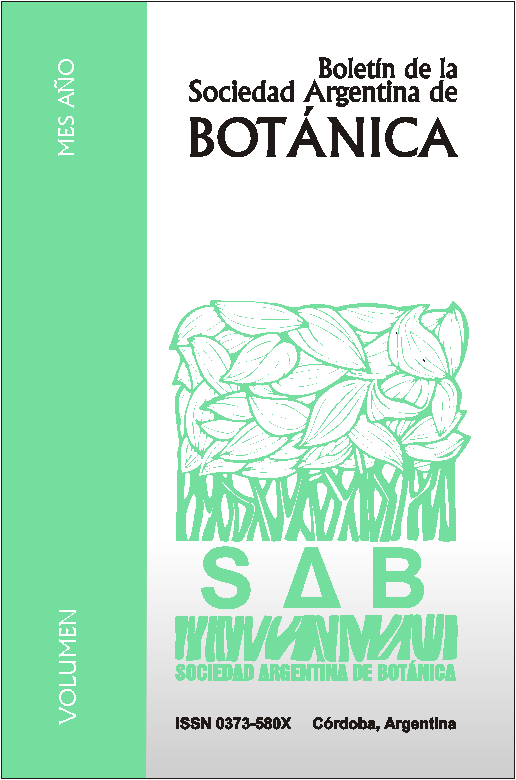Trophic resources used by Plebeia intermedia in the locality of Baritú, Salta, Argentina. Botanical characterization of its honeys
DOI:
https://doi.org/10.31055/1851.2372.v50.n4.12914Keywords:
Melissopalynology, stingless bees, melliferous flora, Yungas.Abstract
Trophic resources used by Plebeia intermedia in the locality of Baritú, Salta, Argentina. Botanical characterization of its honeys. With the purpose of knowing the trophic resources used by Plebeia intermedia, a stingless bee of frequent use in Baritú locality (22° 28’ 54.1” S; 64° 45’ 39.4” W; at 1546 masl), ten honey samples were melissopalynologically analyzed, collected in September and October of 2011 and in January of 2012. The qualitative examinations showed a certain specialization of these bees for using native and arboreal plants, and with flowers clustered in dense inflorescences (mass flowering). The dominant pollen types that originated monofloral honeys were Allophylus edulis (Sapindaceae), Blepharocalyx salicifolius (Myrtaceae) and Myrcianthes pseudomato (Myrtaceae), followed by Handroanthus ochraceus (Bignoniaceae), Ilex argentina (Aquifoliaceae), Parapiptadenia excelsa (Leguminosae) and Sambucus peruviana (Adoxaceae). Other pollen types observed in the samples, with frequency classes important minor or secondary, were Eupatorium (Compositae), Senecio (Compositae), Paullinia (Sapindaceae) and pollens of the families Boraginaceae and Rhamnaceae. The realized examinations in the honeys of Plebeia intermedia and results obtained in this study, constitute the first data on the trophic resources used by this species of stingless bee in the period spring - summer.Downloads
Published
Issue
Section
License
Provides immediate and free OPEN ACCESS to its content under the principle of making research freely available to the public, which fosters a greater exchange of global knowledge, allowing authors to maintain their copyright without restrictions.
Material published in Bol. Soc. Argent. Bot. is distributed under a Creative Commons Attribution-NonCommercial-ShareAlike 4.0 International license.





